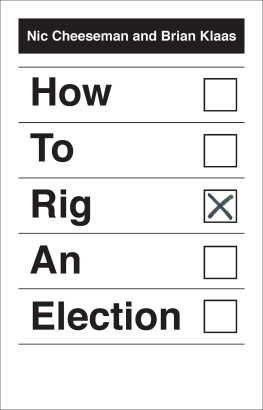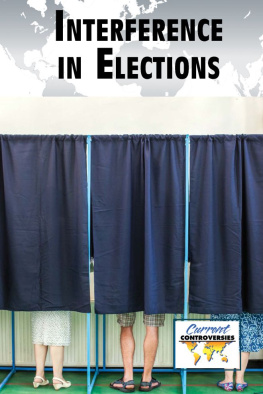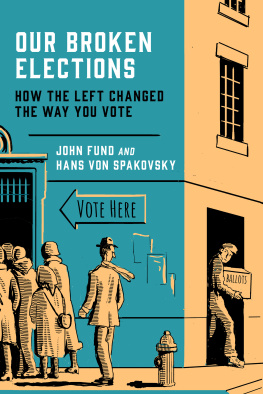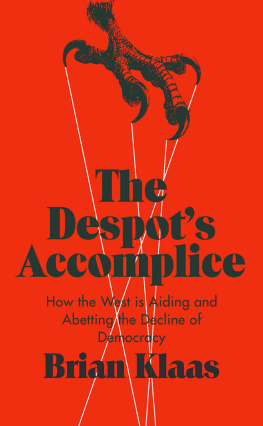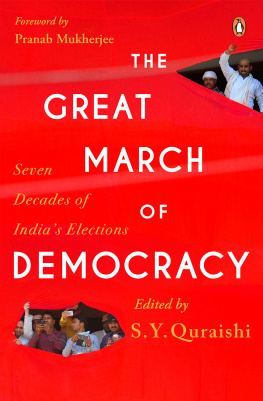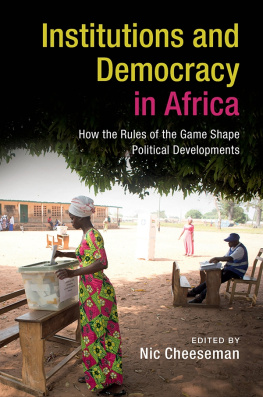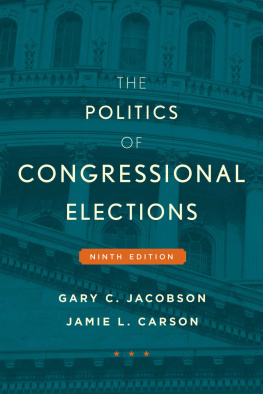How to Rig an Election

Copyright 2018 Nicholas Cheeseman and Brian Klaas
All rights reserved. This book may not be reproduced in whole or in part, in any form (beyond that copying permitted by Sections 107 and 108 of the U.S. Copyright Law and except by reviewers for the public press) without written permission from the publishers.
For information about this and other Yale University Press publications, please contact:
U.S. Office:
Europe Office:
Set in Adobe Caslon Pro by IDSUK (DataConnection) Ltd
Printed in Great Britain by TJ International Ltd, Padstow, Cornwall
Library of Congress Control Number: 2018933274
ISBN 978-0-300-20443-8 (hbk)
A catalogue record for this book is available from the British Library.
10 9 8 7 6 5 4 3 2 1
CONTENTS
INTRODUCTION
How do you solve a problem like elections?
The greatest political paradox of our time is this: there are more elections than ever before, and yet the world is becoming less democratic.
Nowadays, elections are held almost everywhere. The vast majority of governments at least go through the motions of election campaigns, and are rhetorically committed to allowing citizens to cast ballots to choose the leaders who will govern them. However, in many places, that choice is little more than an illusion: the contest is rigged from the start.
Take Azerbaijans 2013 elections, when the highly repressive government of President Ilham Aliyev sought to boost its democratic credentials by launching an iPhone app that enabled citizens to keep up to speed with the vote tallies as ballot counting took place. Touting its commitment to transparency, the regime said that the new technology would allow anyone to watch the results in real time. But those who were keen to try out the new technology were surprised to find that they could see the results on the app the day before the polls opened.
In other words, anyone with the app could see who had won, who had lost, and by how much, before any ballots had even
It is tempting to think that Azerbaijans egregious election rigging is an outlier. We want to believe that elections are truly transformative political institutions and that the case of Azerbaijan is the exception that proves the rule. However, in other authoritarian states in which leaders hold elections despite not being committed to democratic values, rigging is the norm rather than the exception. Since the end of the Cold War, the majority of elections held in such states have featured some form of electoral manipulation. Partly as a result, authoritarian leaders win elections in such contexts about nine times out of ten.
If you think that these kinds of poor-quality polls are a small proportion of all of the elections held around the world, think again: on a scale of 1 to 10, in which 10 reflects a perfect election and 1 reflects the worst possible, the average election around the world scores just 6. In Asia, Africa, post-communist Europe and the Middle East the figure is closer to 5 (see In other words, incumbents win seven times out of ten and this figure has not moved much since the early 1990s.
The picture changes little if, for a moment, we shift the focus from elections to the broader context in which they are held. As the Cold War ended, some scholars and politicians
This represented the worst annual democratic recession in quite some time, but the pattern is consistent: in each of the last twelve years more countries have experienced democratic backsliding rather than democratic consolidation. Significantly, this process is not concentrated in only one part of the world and does not appear to reflect specific regional dynamics. Instead, the erosion of democracy can be identified in all of the regions caught up in the third wave of democratization Latin America, Eastern Europe and Africa as well as areas that have yet to democratize, such as the Middle East. This is reflected in the fact that the five countries that suffered the biggest democratic decline in 2017 were, in order of magnitude, Turkey, the Central African Republic, Mali, Burundi and Bahrain with Venezuela and Hungary not far behind.
These developments are particularly striking when stacked up against the other major trend of recent times: the growing prevalence of multiparty elections. How is it possible that the flourishing of elections has coincided with a decade of democratic decline? The answer is that dictators, despots and counterfeit democrats have figured out how to rig elections and get away with it. An increasing number of authoritarian leaders are contesting multiparty elections, but are unwilling to put their fate in the hands of voters; in other words, more elections are being held, but more elections are also being rigged.
What is less well known is that in many countries elections do not simply fail to topple dictators and despots; they sometimes actively help them shore up their grip on power. This is because reintroducing elections typically enables embattled governments to secure access to valuable economic resources like foreign aid, while reinvigorating the ruling party and in many cases dividing the opposition. Consequently, a number of authoritarian regimes that appeared to be in their death throes have, with the help of the ballot box, proved able not only to win consecutive elections, but also to re-establish their political dominance.
To put it another way, if authoritarian leaders can hold elections without losing, they can have their cake and eat it boosting their resources and legitimacy while retaining their grip on power. This is not to say that autocrats welcome elections: most fight the reintroduction of multiparty politics tooth and nail, in part because they do not see dissent and opposition as legitimate political activities. But once competitive elections have been reinstated, these regimes often prove to be remarkably adept at manipulating them for their own purposes. As a result, authoritarian systems that hold elections but do not allow opposition parties to meaningfully contest them prove to be more durable than those that do not.
This book is about why this is possible and how it happens. While a small number of authoritarian governments win elections through legitimate means, the majority adopt a range of strategies to ensure that they cannot lose. Thus, in many countries around the world the art of retaining power has become the art of electoral manipulation.
This is not to say that all elections are rigged, or that authoritarian leaders rely on rigging alone to win. In reality, savvy autocrats understand that it is far easier to fix the election result if they enjoy significant public support, and that small amounts of rigging are far easier to hide. Election rigging is therefore only one of the tools used by effective dictators. However, this caveat notwithstanding, it remains an essential weapon in the despots arsenal.
For many years, both of us have travelled extensively to understand the paradox of more and more elections of worse and worse quality. We have closely monitored elections in a number of different contexts, and draw heavily on many months of field research in eleven countries across sub-Saharan Africa, the Middle East and Southeast Asia. Between us, we have interviewed more than 500 elite figures in these states, ranging from prime ministers and presidents who have rigged elections to lower-level election officials; from ambassadors to local aid workers; from opposition candidates to rebels and coup plotters disillusioned with democracy.
In this book, we combine these on-the-ground interviews from hundreds of thousands of miles of travel with a global data set of all elections held between 1960 and the present day (see we place greater emphasis on revealing the lessons that can be learnt from those cases of electoral manipulation that we have observed at first hand; thus, we draw most on the countries we know best, including Belarus, Kenya, Madagascar, Nigeria, Thailand, Tunisia, Uganda, the United States and Zimbabwe.
Next page
